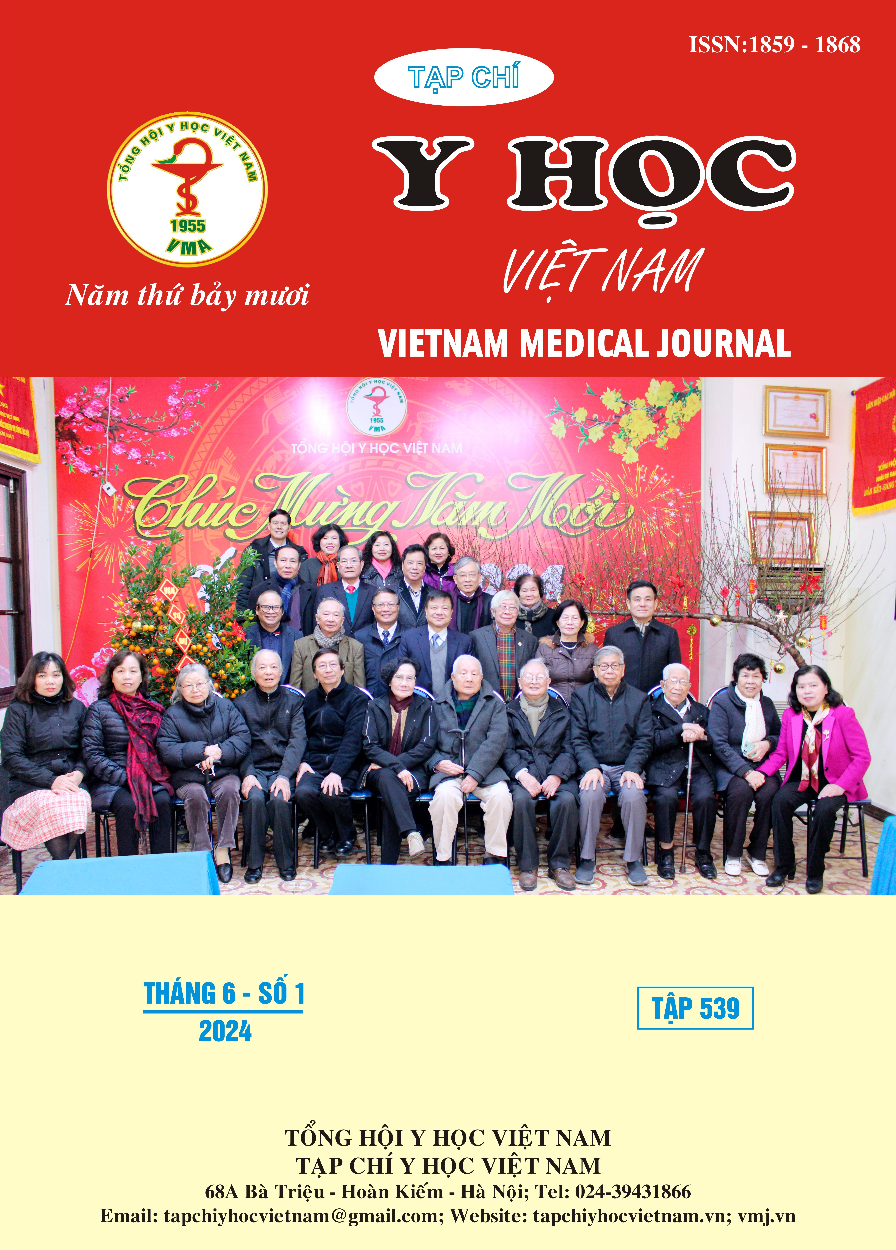STUDY ON IMAGING ISCHAEMIC STROKE EARLY HYPERACUTE ON MULTI-SEQUENCE COMPUTATED
Main Article Content
Abstract
Objectives: To describe the image ischaemic stroke early hyperacute on multi-detector row computed tomography. Methods: Descriptive study of 48 patients diagnosed with ischaemic stroke using CT scans from January 2022 to May 2023 at diagnostic imaging department of Hospital 19-8 Ministry of Public Security. Results: common age ranges from 60-79 years old (60.4%), 64.6% male, 35.4% female, male/female ratio is 1.82. The most common area of injury before contrast injection is the internal capsule with a rate of 28.6%. The most commonly ischaemic stroke early hyperacute on brain CT scans loss of grey-white matter differentiation at a rate of 10.4%, and the insular Ribbon sign at 2.08%. ASPECT scale = 10 accounts for the highest proportion of 68.79%, and ASPECT scale = 7 accounts for the least 4.16%. The rate of ischemic stroke due to damage to the middle cerebral artery accounts for the majority of 31.25%.
Article Details
References
2. Joanna M. Wardlaw, O.M., Early Signs of Brain Infarction at CT: Observer Reliability and Outcome after Thrombolytic Treatment— Systematic Review1. Radiology, 2005. Volume 235(2): p. 444-453.
3. Srinivasan, A., et al., State-of-the-Art Imaging of Acute Stroke1. Radiographics, 2006. 26(suppl 1): p. S75-S95.
4. Puetz, V., et al., Extent of hypoattenuation on CT angiography source images predicts functional outcome in patients with basilar artery occlusion. Stroke, 2008. 39(9): p. 2485-90.
5. Saake, M., et al., Comparison of conventional CTA and volume perfusion CTA in evaluation of cerebral arterial vasculature in acute stroke. AJNR Am J Neuroradiol, 2012. 33(11): p. 2068-73.
6. Lê Quỳnh Sơn (2019). Nhận xét đặc điểm hình ảnh cắt lớp vi tính 256 dãy trong chẩn đoán nhồi máu não cấp ở người cao tuổi, Luận văn thạc sĩ y học, Trường Đại học Y Hà Nội.
7. Trần Anh Tuấn và cộng sự (2018). Nghiên cứu áp dụng chụp cắt lớp vi tinh mạch máu não nhiều pha chẩn đoán nhồi máu não tối cấp. Tạp chí y học Việt Nam, 462,141.


